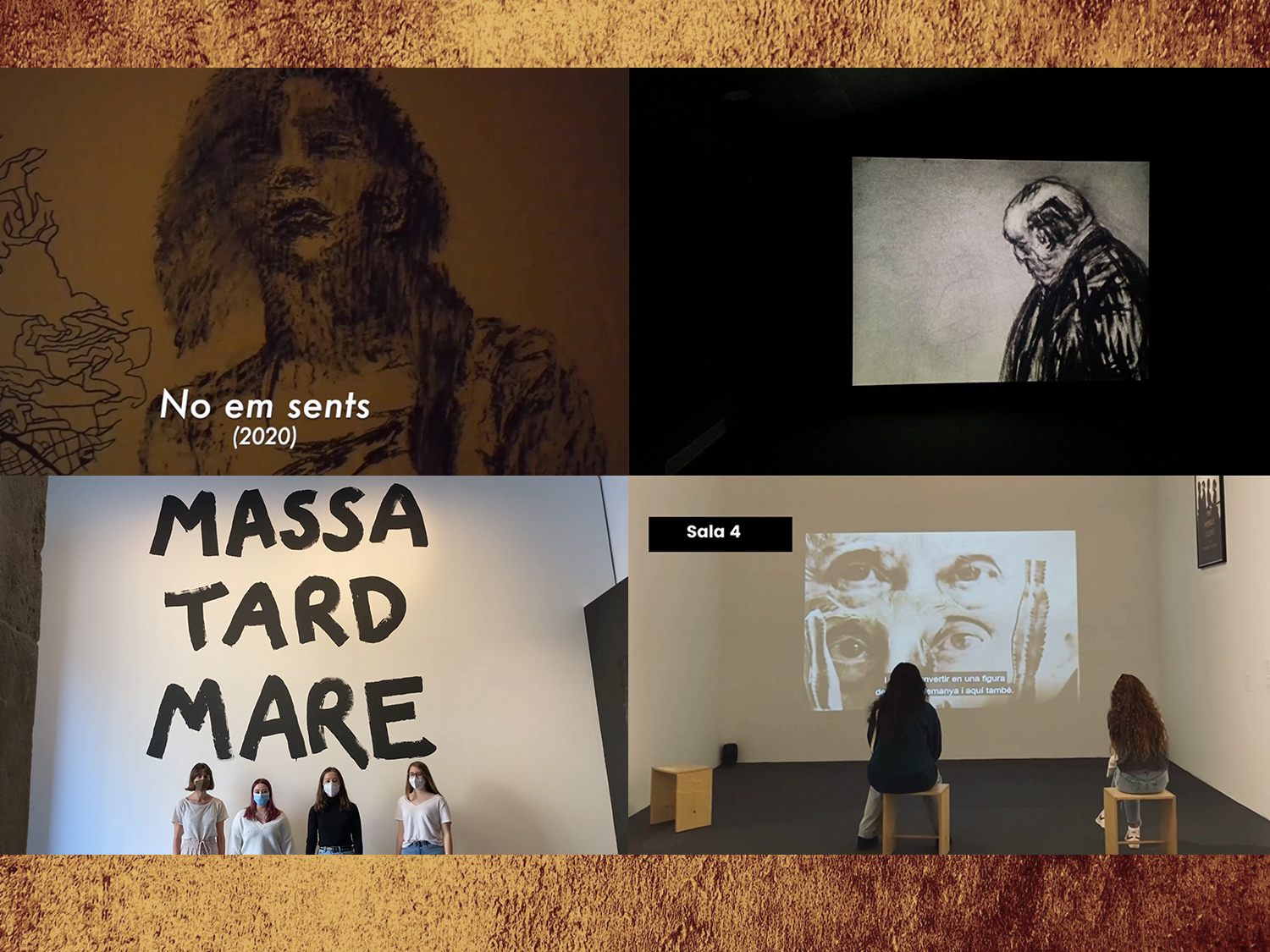Communication and the Culture Industry's blog

#CICStudents | The students of “Trends in contemporary arts” carry out the analysis of various exhibitions in the format of audio-visual capsules
Published on 14 October, 2021
During the first semester of the academic year, the students of the subject “Trends in contemporary arts” G2, taught by Professor Assumpta Bassas, have carried out in groups of four the analysis of a contemporary art exhibition in audio-visual capsule format. The exhibits analysed have been: “William Klein. Manifesto”, “You don’t hear me. Nalini Malani”, “SISTERS! Barbara Hammer”, “William Kentridge. What is not drawn”, “PUBER. Tanit Plana”, “Aziz Azara. The Endless Echo of Tomorrow “,” Tony Cokes. Music, Text, Politics “,” Based on true stories. Foto Colectania Collection “,” Fina Miralles. I am all I have been “,” The Daltons “,” Bill Brandt “,” Aurèlia Muñoz. Anuar l’espai “, and “Where are we, where could we be”.
The main goal of the exercise has been to promote the student’s direct experience not only with contemporary art, but also with the expository fact. Contemporary art exhibitions are cultural events, and are part of the cultural industries’ production. There are many types of exhibitions, and all of them have a curatorial narrative and perspective, a discourse built for a specific space. Therefore, the guidelines of the analysis were meant to lead the students to become aware of the contents, but also of the various technical (the lighting, the order of the rooms, the signage, the placement of the works…), and communicative aspects (the institution’s website, the promotional image, the wall texts, the brochures of QU codes, the room informants…) of the event. The idea was to understand that exhibitions are not mere showcases for works of art, but have the role to structure the way of understanding and enjoying the artistic event in contemporary public, and to design the relationship between the audience and the artistic culture.
The audio-visual capsules made by the students have been presented for 15-20 minutes at the beginning of each online class, and have been commented by the Professor and the students. This, throughout the semester, they have obtained an overview of the autumn exhibitions in Barcelona, through the unique views of each group. They have also managed to get closer to glimpsing the complexity of artistic culture and the different professions involved in the production of exhibitions. Their analysis has gone beyond than that of an uncritical consumer of culture.
The students have done an excellent job developing key group work skills: gathering information, creating and organizing content, writing the script and choosing the audio-visual tools. Their motivation and interest has been shown in an interesting balance found, in most cases, between following the given guidelines and the commitment to creativity and reflection. The exercise has been a first step to get closer to critical analysis tools that contribute to forming a more elaborate and sensitive look at the phenomenon of contemporary art in its current exhibition circuit in our city. A very interesting qualitative leap to start building a discourse through audio-visual media available to students.
Here are some of the most outstanding works:
PUBER. Tanit Plana, made by Sandra Lázaro, Júlia Manero, Alba Mendoza and Marina Pérez.
Sisters! Barbara Hammer, made by Violeta de Tomás, Alejandra de la Mora, Alba Falcón and Ennia Fillola.
What is not drawn. William Kentridge, made by Luna Fernández, Gerard Cosculluela, Alejandra Barnat and José Maria Guilera.
You don’t hear me. Nalini Malani, made by Gisela Mateu, Pau Vega, Lorena Noé and Laia Sanz.


